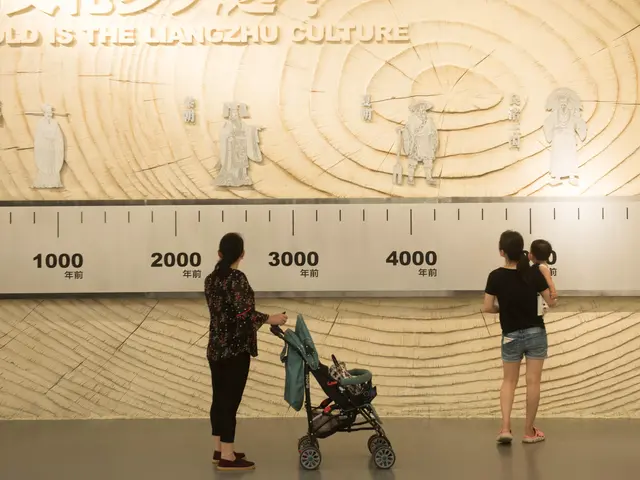The US economy continued to see robust job creation in November, with strong gains in manufacturing, health care and construction, the government reported Friday.
The result showed employers were still eager to fill openings even as the world's largest economy approaches full employment but wage growth remained disappointing.
While the White House hailed the news, crediting President Donald Trump's "bold economic vision," the report showed some signs the US jobs engine has cooled in recent months as companies are beginning to exhaust the supply of available workers.
The latest surge in employment also was sure to help push the Federal Reserve to raise interest rates next week at its final meeting of the year, as markets overwhelmingly expect.
Corporate recruiters (R) talk with job seekers in Washington, June 11, 2013.
The news helped encourage Wall Street, where stocks opened significantly higher and were holding onto gains toward 1800 GMT after a week of up-and-down trading.
Employers added 228,000 new positions last month compared to October, far more than economists expected, while the unemployment rate held steady at 4.1 percent. Revisions to the prior two months added just 3,000 more jobs than previously reported.
The increase was slower than October's 244,000 gain, and so far this year job creation is down from 2016.
Average job creation so far in 2017 has fallen to 174,000 a month from 187,000 last year. And over the last three months, the average has slowed even further to 170,000.
In addition, average hourly earnings rose only 0.2 percent for the month to 26.55 dollars, a weaker increase than expected. Earnings are up 2.5 percent over the last 12 months, keeping wages a little ahead of inflation.
Trump has vowed to add 25 million new jobs over a decade, in large part by revitalizing manufacturing sector while enacting a pro-growth agenda of tax cuts, slashed regulation and aggressive trade policies.
However, economists say that target is unrealistic in an economy at full employment with an ageing work force.
"As we continue to unleash the American economy from unnecessary regulation and taxes, we look forward to seeing more reports like this, showing a healthy and thriving jobs market for the American people," White House Press Secretary Sarah Sanders said in a statement.
Dwindling labor supply?
Manufacturers added 31,000 jobs in November, continuing the steady increase of the past seven years, and pushing the total to its highest level since January 2009.
The health care sector added 30,000, but so far this year the monthly average in health care has slowed to 24,000 positions from the 2016 average of 32,000.
The labor force participation rate was unchanged at 62.7 percent but elsewhere there were signs employers have begun to dig deeper into the pool of available workers in order to fill open positions.
The number of people working part-time but who wanted to work full-time has fallen by 858,000 over the last 12 months, according to the report. Those marginally attached to the labor force, who are neither working nor looking for jobs, dropped 451,000 in the past year.
With Congress about to enact a sweeping overhaul of the US tax code which Republican lawmakers say will stimulate the economy, economists caution that a red-hot US labor market is poised to see unemployment fall below four percent – for the first time since December 2000 – which could spark inflation and spur the Fed to raise interest rates even faster.
Economists said the November report confirmed that the current pace of job creation was more than enough to keep the unemployment rate trending down, even if the gains were impacted by the summer hurricanes in Texas and Florida.
"The numbers might have been boosted by the return to work of people affected by the hurricanes but this effect will have been small," Ian Shepherdson of Pantheon Macroeconomics said in a note to clients.
"This will push the unemployment rate below four percent very soon."
(AFP)
 简体中文
简体中文

